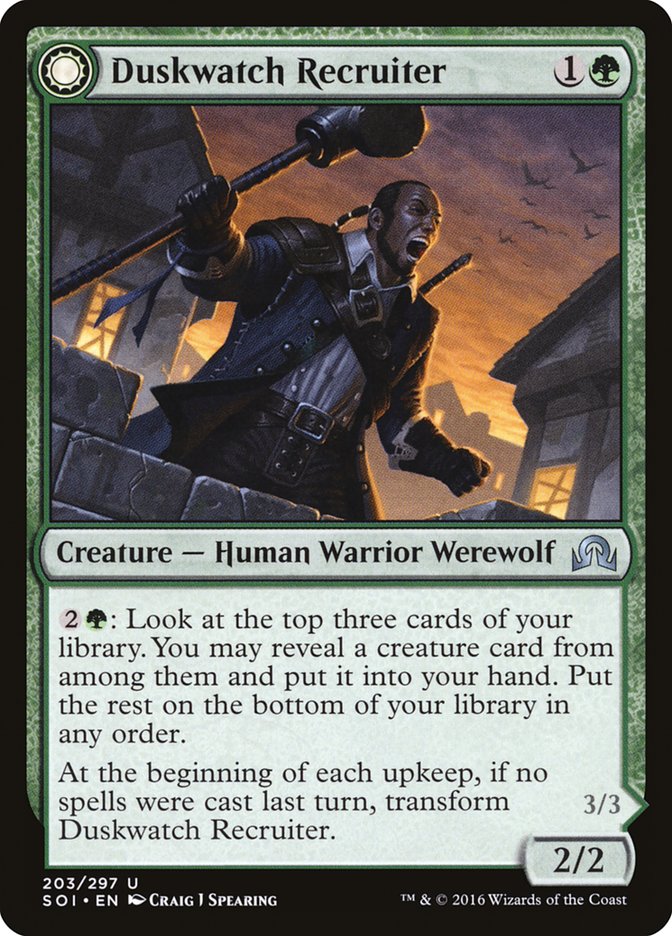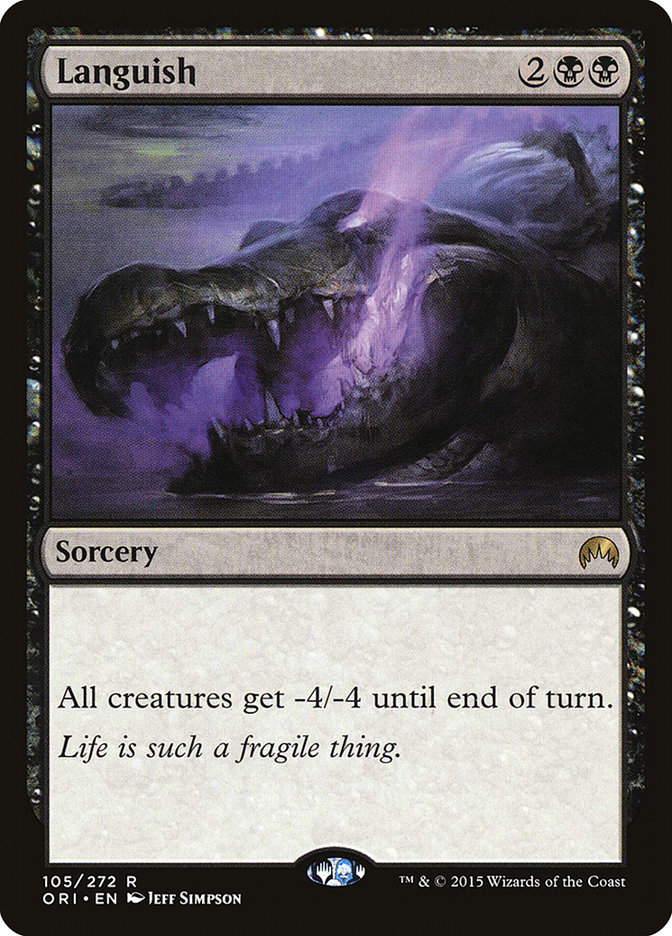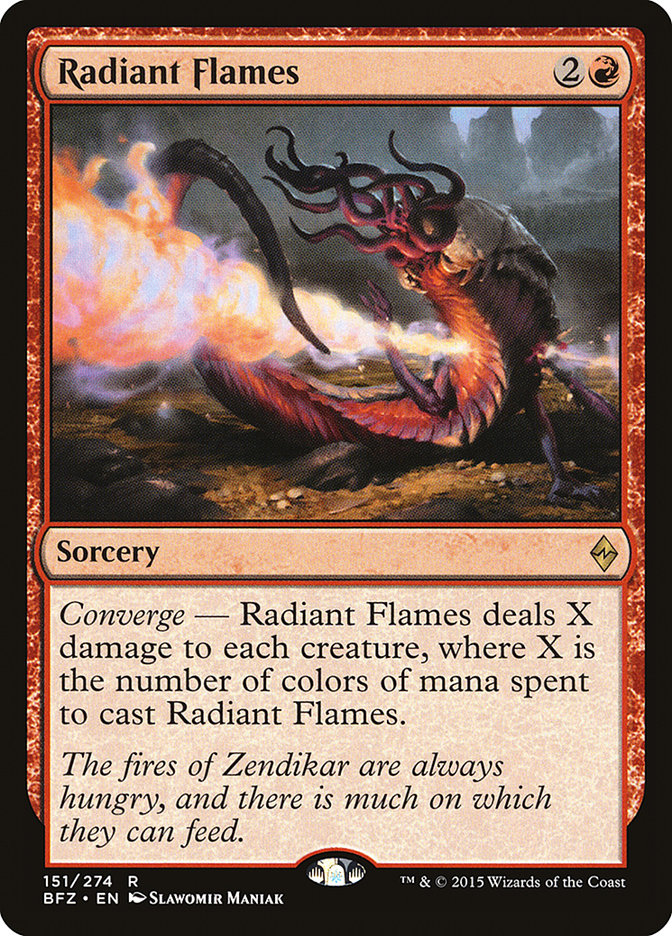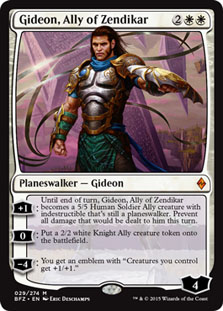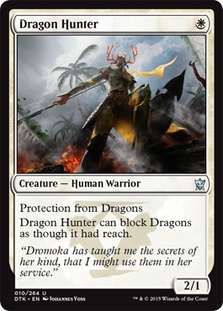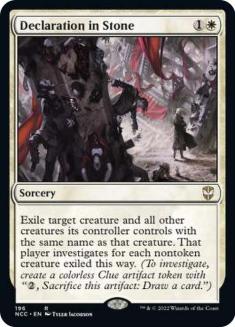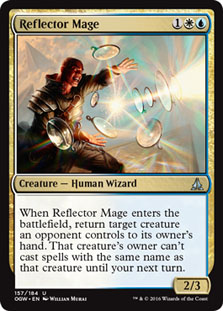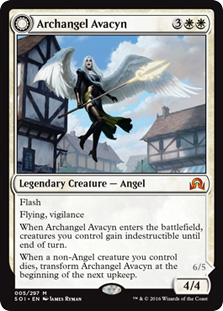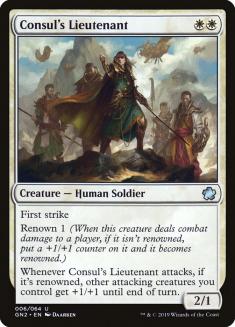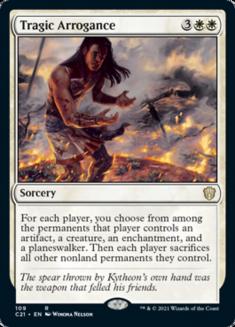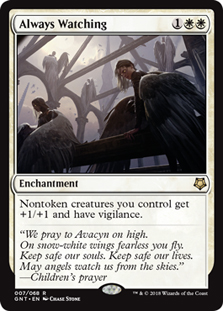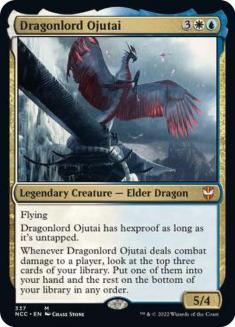
Creatures (28)
- 4 Knight of the White Orchid
- 2 Dragon Hunter
- 2 Kytheon, Hero of Akros
- 2 Consul's Lieutenant
- 4 Reflector Mage
- 2 Archangel Avacyn
- 4 Thraben Inspector
- 4 Thalia's Lieutenant
- 4 Town Gossipmonger
Planeswalkers (2)
Lands (22)
- 13 Plains
- 1 Island
- 4 Prairie Stream
- 4 Port Town
Spells (8)
Sideboard

I prepared with Team East/West Bowl for this Pro Tour alongside Seth Manfield following the disbanding of Team Blitz. While the process ultimately concluded with the majority of the team choosing to play an Esper Planeswalkers deck that Andrew Brown and Neal Oliver created to fight the perceived aggression coming out of the SCG Tour®, and Seth ended up making the Top 8 with it, I chose not to play it.
I’ve mentioned it sporadically over the course of various articles, but I feel strongly that the smaller a perceived skill gap is between me and my average opponent over the course of the tournament, the more inclined I should be to attack in Constructed. The Pro Tour is not a place where you get many free wins due to lack of experience or technical mistakes, and as a result I like to maximize my chances of getting them from my opponents’ decks stumbling.
This philosophy has served me quite well over the course of my time on the Pro Tour, and I didn’t think Esper Planeswalkers was nearly powerful enough for me to move away from my preference (despite it playing well in testing).
As a result, I turned toward Gerry Thompson and his success with W/U Humans at the #SCGINVI. Despite putting in a lot of work over the week into various other strategies, most of our decks – particularly creature and midrange decks – were largely invalidated by or worse copies of Humans and Bant Company.
Duskwatch Recruiter in particular is a card a lot of folks are still underrating. It’s outrageously powerful and I already have it on my list to try in Modern, particularly in conjunction with Restoration Angel and Aether Vial.
As a complete aside, here is a deck that I built two days out from the Pro Tour after seeing some results from Magic Online. It seemed to have promise but couldn’t be fixed in time.
Creatures (27)
- 2 Dragonlord Atarka
- 2 Nissa, Vastwood Seer
- 2 Bounding Krasis
- 1 Ulamog, the Ceaseless Hunger
- 4 Drowner of Hope
- 4 Eldrazi Skyspawner
- 4 World Breaker
- 4 Sylvan Advocate
- 4 Duskwatch Recruiter
Lands (25)
Spells (8)

This deck had a lot of problems, but being able to maximize many of the strengths of the Ramp strategy while having a serviceable early-game just by getting on the battlefield is a huge boon to the archetype. This notion can be seen in a completely different light with Brad Nelson’s G/R Goggles Ramp that can simply interact up the curve in addition to playing out huge haymakers.
As I previously noted, Duskwatch Recruiter particularly impressed. Ramp tends to have an issue with running out of steam, especially when its payoffs can be eliminated for as little as two mana with Declaration in Stone. Drawing Duskwatch Recruiter deep in the game on eight or more mana is often just game over on the spot as it spews out multiple huge threats with more to come.
Anyway, back to W/U Humans.
I knew that I wanted to be aggressive and I believed there to be multiple problems with Bant Company. Notably, the deck had mediocre mana and picking up draws in the mirror match was an incredibly real possibility.
We (East/West) were able to construct decks that had game against Humans pre-sideboard in a world where cards like Languish or Radiant Flames were effective for catching us up on the battlefield. That being said, this overloading on cheap spot removal can get inbred if Humans simply moves towards more diverse types of threats and answers.
These reasons are effectively why I chose to play W/U Humans. It’s bizarre to say that a month ago I was talking about how Gideon, Ally of Zendikar felt “unplayable,” but in reality it was likely the best card in my deck. As folks seemed to adjust towards contending with one and two-drops, they lost their ability to beat a planeswalker, especially one backed up by Negate.
I didn’t win a ton of Game 1s, but I frequently hammered my opponent with planeswalkers and Elder Dragons when backed up by a few additional tools. W/U Humans is excellent at playing at various speeds during the games due to how cheap the curve is generally. It can pace itself appropriately to pressure an opponent while leaving up disruption, leading into turns where it finally deploys all its threats, or simply play a bigger game where the early pressure is just setting up a huge trump when an opponent is finally forced to contend.
Sideboarding
G/R Ramp
In:
Out:
These decks can be broken down into the much more “all-in” G/R Eldrazi Ramp with Jaddi Offshoot and Ulamog, the Ceaseless Hunger, and the new Goggles Ramp deck. Against the former, cards like Reflector Mage are a lot more valuable just for getting a Jaddi out of the way, but despite their general ineffectiveness, the games typically play out to a point where getting a big creature out of the way with a Declaration or Mage is vital for actually ending the game. Typically, we just want to not get destroyed by Kozilek’s Return while pressuring our opponent appropriately and putting them in a squeeze with a Negate, Gideon, or Archangel Avacyn.
Bant Company – On the Play
In:
Out:
Bant Company – On the Draw
In:
Out:
This matchup doesn’t feel particularly great, and the only time I played against it over the course of the tournament was a pretty incredible match against Calcano, where undoubtedly some things had to go right for me to sign the slip in my favor.
The biggest key here is focused aggression. Gryff’s Boon is a great way for jumping past the plethora of blockers that Bant Company is capable of producing. Despite the fact that they are a creature deck, trading with the likes of Declaration in Stone is not particularly advised; eventually they will grind you out. Due to the fact they have a multitude of ways to produce additional bodies to block, a well-timed Reflector Mage can certainly lead to getting some damage through, but you don’t want to draw multiples very often.
Humans
In:
Out:
The mirror match is largely about positioning yourself to go slightly bigger, yet at the same time keep up with any aggression you might face. This is far more pronounced against a version like Boss Humans, whereas a true mirror might ultimately come down to a positioning battle around Tragic Arrogance that may even go as deep as including Negates. Of course, if a player were inclined to approach the matchup in that way, they could just get destroyed quickly by a Gideon, Ally of Zendikar.
G/W Tokens
In:
Out:
I haven’t actually played this matchup, but I suspect that we are not likely favored in particularly long contests and need to focus on getting the game over with by using Gryff’s Boon to pressure the opponent and assassinate planeswalkers. Any attempts to bog up the ground with Gideon or Reflector Mage will likely be ineffective, and despite Steve’s deck being labeled a token deck, I doubt we want to draw many Declarations, since planeswalkers will just refuel their battlefield.
Stasis Snare is specifically here for answering Archangel Avacyn, since flipping her is such a threat, but it can also serve as a nice answer to Hangarback Walker, since we need to trim on Reflector Mage.
Control Decks
Out:
This is the general manner for sideboarding against control decks like Esper Planeswalkers and G/B Seasons Past. It’s important to keep in mind that when cards like Kalitas, Traitor of Ghet or Jace, Vryn’s Prodigy go unchecked, they are immensely powerful against W/U Humans, which is a reason that many control decks include them in their sideboard and aggressively sideboard them in. As a result, even if you see no creatures from your opponent in the first game, I would likely default to keeping in a handful of Reflector Mages, since they are also reasonable aggressive tools in addition to being potentially disruptive.
These are the matchups where your Dragonlord Ojutais are on full display, as they are impervious to almost all removal and sweepers when backed up by an Always Watching. This combination is lights-out for a variety of decks, and when combined with Negate is basically the hard check-mark against many archetypes. In a nutshell, this is the reason to play a version of Humans with blue; the sideboard cards are extremely effective against the more narrow cards control decks are interested in fighting aggression with.
As I said, I finished the Pro Tour 11-5, which was good enough for my second Top 25 in a row this season, putting me up to 46 Pro Points and a soft lock for Platinum with a last GP X-4 record to complement my appearance in Sydney. I don’t want to celebrate just yet, as I’ve been so close before and finishing out the season as Platinum means so much to me due to my disappointment two years ago, so I’ll wait to delve into that deeper when I’ve officially earned it, but what I will touch on is how emotionally jarring the Organized Play announcement was at the time.
Of course, the decision has been overhauled as of this writing, but I feel terrible for the tone that encapsulated Sunday at the event site. Many of my friends, who have really become my Magic family over the last two years, made the Top 8 on Sunday. It was an incredible experience to have so many of us do well on Saturday, and when I found out what had been announced while in the back helping Seth test for the semifinals, I was shocked to the point where Seth told me it was okay to stop playing.
Steve Rubin is an incredible person and worthy Pro Tour Champion, and I can only hope that his experience wasn’t soured by the outcry on social media and the haze that many of us found ourselves in Sunday afternoon and evening.
As usual, it feels good to be home after a two-week-long trip involving international travel. It looks like I might even be attending #SCGMKE this weekend. Perhaps that will finally result in the article on Grixis Control many of you have been asking for.

